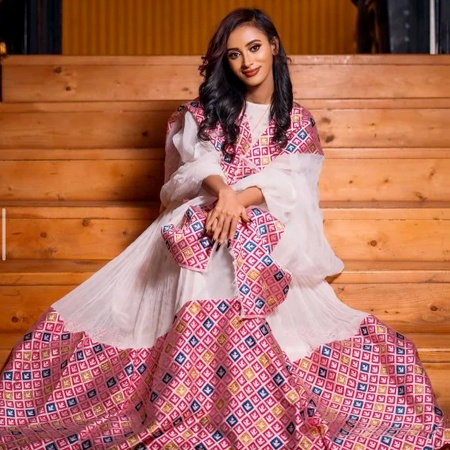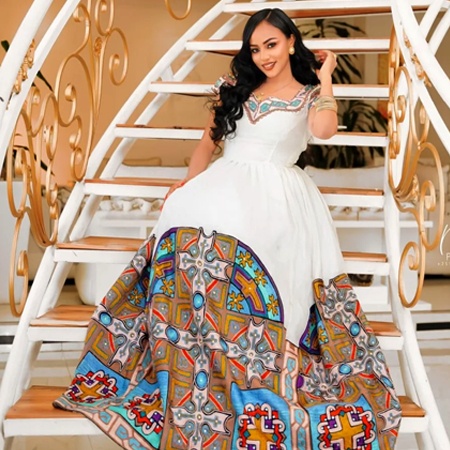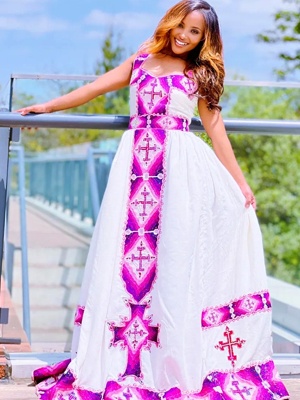The Habesha Kemis might look similar at first glance, but across Ethiopia and Eritrea, every region adds its own touch. The design, colour and embroidery often reflect where someone comes from - and each version carries local meaning.
In
Tigray, the dress usually features clean white cotton with bold black and red embroidery. The patterns are sharp and geometric, often paired with a traditional scarf called Netela. It's a style that feels grounded and proud.
Amhara styles lean towards softer patterns with colourful embroidery - greens, golds and blues are common. The stitching, known as Tibeb, lines the sleeves and hem, giving the dress a delicate, graceful feel. These details often carry family or community significance. In
Oromia, the Kemis tends to be looser and more colourful. Patterns vary widely - some traditional, others more modern. This version feels expressive and bold, often reflecting personal or cultural identity.
Eritrean designs are usually more fitted, with fine gold or silver embroidery. The overall look is elegant, often worn with a matching shawl. It's a blend of tradition and modern refinement, common in formal settings.
Why it Matters?
These differences are more than just style choices. They highlight local identities and show how culture lives through clothing. The Habesha Kemis changes from place to place, but its purpose stays the same - it connects people to their roots and tells a story without saying a word.

























 CONTACT USWaves Institute of Fashion Designing,
CONTACT USWaves Institute of Fashion Designing,